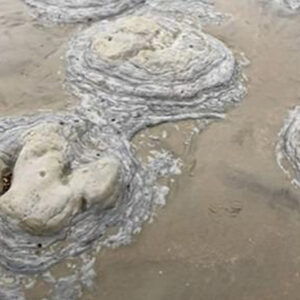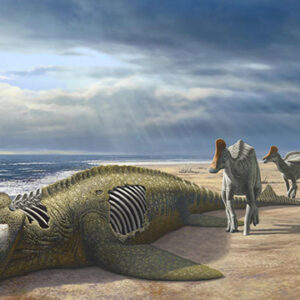
Nearly a century after the discovery of the legs of a giant statue of Pharaoh Ramses II in Egypt, archaeologists have finally unearthed the other half of the statue.
Rather than his wife, this half consists of his torso, head, and shoulders, which perfectly fit with the lower half that has been kept in a museum for decades. Together, the reunited statue stands at an impressive 23 feet tall, portraying one of the greatest Egyptian rulers in a sitting position with a crown shaped like a cobra – a symbol of kingship. The back of the statue is adorned with hieroglyphs listing his many titles.
Ramses II, also known as Ramses the Great, lived during a time when lifespans were considerably shorter, averaging 40-50 years if one survived childhood. Remarkably, he lived into his 90s, outliving almost of all his dozens of children and even some of his nearly 100 grandchildren.
His reign ushered in a golden age across the 19th Dynasty’s vast kingdom, stretching from Sudan to Syria. This era of prosperity is reflected in the numerous monuments, temples, and statues, such as the recently reunited one discovered originally in 1930 by German archaeologist Günther Roeder.
Dr. Adel Okasha, head of the Central Administration of Antiquities of Central Egypt, revealed that the excavation mission began its work in the region of Ashmunin over the past year. Their goal was to locate the religious center of the ancient city of Hermopolis during the New Kingdom until the Roman era. This area is believed to preserve a number of temples, including one dedicated to Ramses II, according to a statement from the Ministry of Tourism and Antiquities.
“Though we have not found the complex we were initially looking for, a statue of such importance is a sign that we are digging in the right place,” Dr. Okasha, told the National.
Ashmunin, once known as Khomeno in ancient Egypt, was the seat of worship of the Egyptian Thamun. Later, in the Greco-Roman era, it became Hermopolis Magna, the center of worship of the god Thoth and the capital of the fifteenth Egyptian region.
The excavation season has now concluded, and along with the discovery of the upper half of the king’s statue, the team succeeded in restoring and reinstalling the massive granite columns on the northern side of the Ashmunin basilica. This basilica was built atop the ruins of a Ptolemaic temple, signifying the layers of history present in the region.
What are your thoughts? Please comment below and share this news!
True Activist / Report a typo


